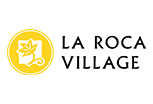In the spring of 1906, Pau Picasso went to Gósol with his companion, Fernande Olivier. The last part of the journey had to be done on a mule. He had a few things with him: some clothes, his easel and a few boxes full of brushes and oils.
When returning to Paris, in August of the same year, the couple brought a small caravan of mules, a clear sign that Picasso had painted a lot.
The most important thing, however, is that he had created some of the most significant works of modern art and the most moving of all time: figures of a rare intensity, sweetness in gently tangible girls at the same time immersed in a mysterious distance, boys wrapped in the mystery of timeless space, all together invaded by a color between ochre, flesh and salmon pink with touches of gray. They produced the effect of an arrogant and at the same time friendly silence, a strong sense of charm that emanated from the stony earth of that Pyrenean village, marked by centuries and by the classic and untranslatable beauty of simplicity.
The short stay in Gósol was not only decisive for Picasso’s artistic research but also for the entire subsequent evolution of 20th century art. It represented the end of a stage of research and the awakening of a new era.

















